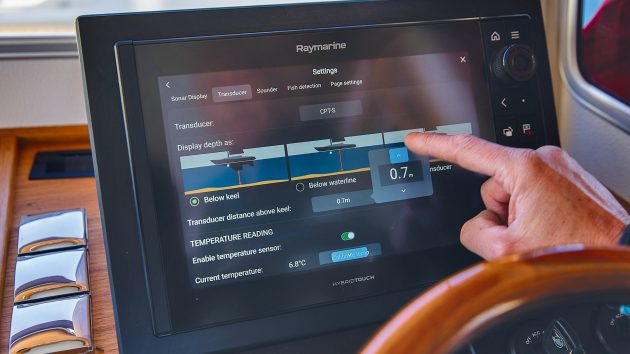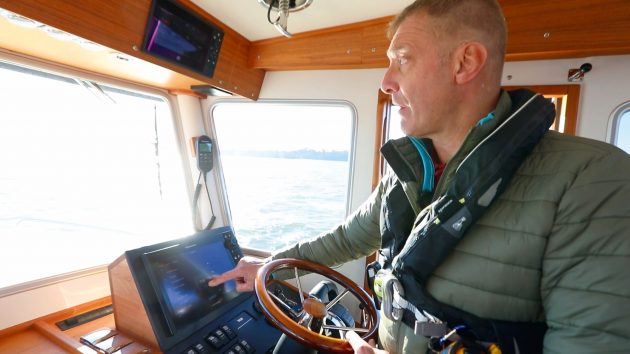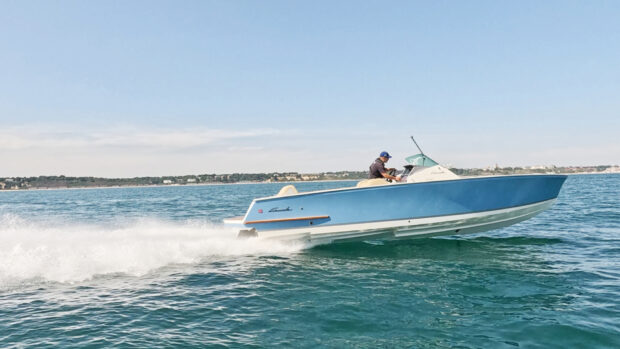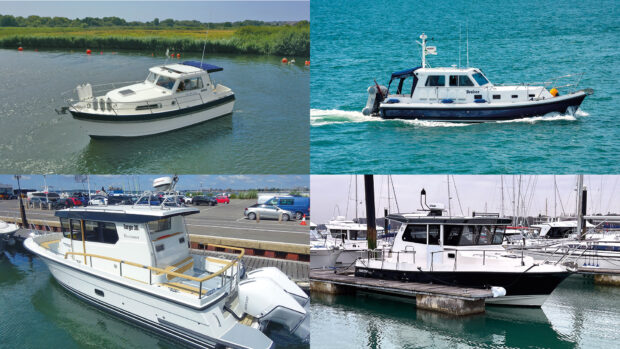Jon Mendez returns for more boating skills, this month he takes a look at getting more from your depth sounder
Knowing how much water is below your boat is vital to safe boating. No-one ever wants to unintentionally ground their boat but if you are going to do some experiential ‘learning’ then it’s far better to do that on soft mud rather than rocks or even sand, which can be surprisingly hard.
Knowing exactly how your depth sound is set to read is key to this – is it showing you depth under the transducer, under the lowest point of the boat or from the waterline?
If you’re not sure, best practice is to double check before you set off. I do this using a weighted line with knots at 1m intervals. Once I have confirmed my depth set up, I like to be prudent and place my boat over a spot depth, checking the charted depth, adding on any tidal height to give a total depth of water and comparing it to my depth screen. If they pretty much agree, I feel confident to continue.
The next step is to decide on a sensible limit for how shallow you are prepared to go. I generally aim for a safe limit of 2m below the boat’s lowest point – often the propellers on a planing craft. This is usually called under keel depth.
Now I might well need to relax my set limit, if I am absolutely certain of what I am about to do. So, for example, going into a shallow area to anchor, or to explore further up an estuary.
Article continues below…

How to set up depth sounders: Everything you need to know about sonar

How to check your chartplotter’s accuracy
However, I will only ever do this after studying the chart to see what the sea bed is composed of. I usually find this is easier to get from physical charts than digital ones, although that is beginning to change. If you are relying on digital ones, make sure you know how they display rocks and shallows, as they don’t all follow the Admiralty standard settings.
The great thing about depth as an aid to navigation is that it’s often the closest point of land, it just happens to be straight down, rather than far away in the distance. That knowledge allows you to eliminate huge areas of the chart very quickly, as there simply won’t be enough depth to navigate there safely.
Many modern plotters allow you to configure the depth contours and colours to suit you, so if the draft of my vessel is 1.5m and I have set my transducer to read under keel, I like to set the plotter with the contours changing from white (deep water) to pale blue at either the 2m or 5m contour, depending on sea bed type, progressively darkening to the zero contour.
This means I can be relatively relaxed when cruising in the white and light blue areas but the moment I approach a darker shade of blue my focus on the depth display is greatly increased. Just be super careful as not all plotters use the same colour palette.
Lastly, adding an alarm to the depth sounder at 2m under keel, so you have an audible reminder that the depth is shallowing, is a sensible precaution, especially if you’re cruising shorthanded.
Depth gauge setting
Most modern depth gauges have different settings. I like mine to display depth under the keel. On more basic sounders you should still have an offset function allowing you to subtract the distance from the sounder to the keel/propeller.

Plotter settings
Here I have set the Navionics plotter to read progressively darker blue as it shallows from the 5m contour. This gives me a quick visual reference that I need to start keeping a closer eye on the depth gauge as soon as I stray outside the white area.
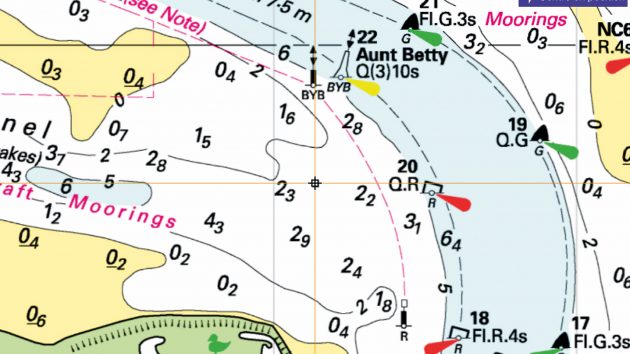
Know your colours
Imray electronic and printed charts use a reversed colour scheme. This image shows exactly the same area but here the blue represents deep water, whereas white is below 5m.
Depth alarm
You can set the depth alarm to any depth but I usually set it to 2m below the keel. This gives me an early warning that I’m drifting out of the channel while allowing sufficient time to change course if needed.
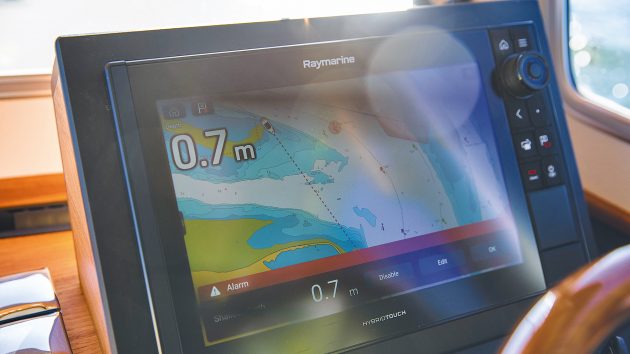
Nav aid
The alarm can also be used to assist navigation, for example if you want to anchor with 2m below the keel it will let you know when you’ve reached the right depth. Here we have gone too far at just 0.7m.
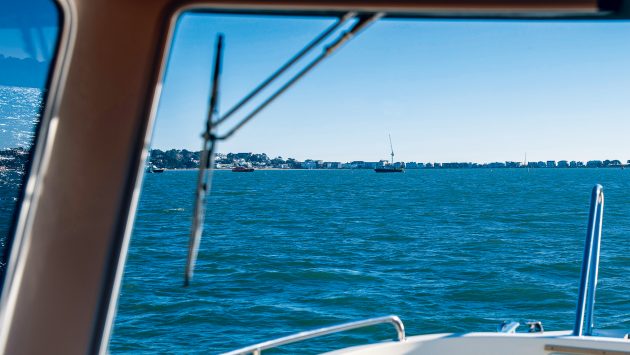
Helping hand
Here, I was looking for the next port channel marker but as it was masked by the harbour master launch, I nearly cut across a shallow patch to the next red buoy. Luckily, the depth alarm alerted me in time.




